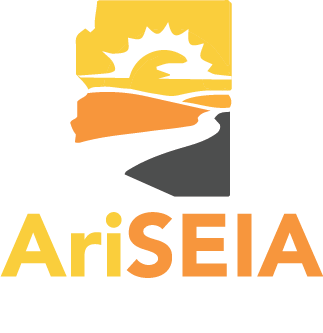|
Arizona Corporation Commission
1200 W. Washington Street Phoenix, AZ 85007 RE: Joint Comments in the request of Tucson Electric Power Company for approval of the PPFAC rate adjustment, Docket No. E-01933A-19-0028 Dear Chairman O’Connor and Members of the Arizona Corporation Commission, Vote Solar, the Southwest Energy Efficiency Project (SWEEP), and the Arizona Solar Energy Industries Association (AriSEIA) appreciate the opportunity to provide these comments on Commission Staff’s Recommended Opinion and Order (ROO) regarding Tucson Electric Power’s (TEP) request to increase the Purchased Power and Fuel Adjustment Clause (PPFAC). If approved by the Commission, TEP’s proposal would increase the average residential bill by $13.11 (10.8%) on top of the previously approved PPFAC, which was $6.36 (5.1%). The Staff’s proposal would increase the average residential bill by $12.07, plus the existing $6.36, for a total impact of $18.43 per month. The volatile nature of natural gas costs is an important reminder that the Commission should consider all tools at its disposal to mitigate significant increases to customer utility bills via fuel adjustors. After all, TEP’s request equates to a $19.47 monthly charge for the average residential customer. Notably, greater investment in reliable, affordable energy efficiency and renewable energy are vital solutions to insulate customers from this price shock and volatility. At the Energy Reliability Summit and Summer 2023 Energy Preparedness special open meeting, several commissioners reinforced the importance of demand response in maintaining reliability. Tools like demand response can also save costs for individual customers and the grid. Further, energy efficiency is well documented to cost less than other alternatives, including gas resources. During times of upward utility bill pressure, TEP’s energy efficiency offerings are especially vital because they can help residents and businesses control their energy costs, drive down energy bills, and redirect savings to the local economy. Additionally, renewable energy, such as wind and solar, offers a price-stable alternative because it has no fuel costs. However, the current structure of fuel adjustors passes 100% of fuel costs on to customers, significantly reducing the utilities’ incentive to make every effort to mitigate increasing costs. Utilities must consider fuel and other operations and maintenance costs when making resource procurement decisions because customers pay for the totality of those costs, not just capital costs. A Bring Your Own Device (BYOD) program is another option to reduce customer exposure to volatile fuel prices. Dispatch of customer-sited batteries, when demand is high, reduces the need for utilities to purchase more expensive peak power. As a result, customer-sited solutions like a BYOD program benefit the grid while reducing reliance on fuel adjustors. In conclusion, the current structure of the PPFAC creates significant exposure to fuel price volatility that results in variable and unpredictable customer bills. Accordingly, the Commission should examine the structure of fuel adjustors like the PPFAC to determine if the reinstatement of a cost-sharing provision to protect ratepayers from skyrocketing fuel costs is warranted. We believe this examination should occur in the Company’s current pending rate case or through a separate proceeding before the following PPFAC rate period proposal is filed. We appreciate your consideration of these comments and ongoing efforts to protect Arizona ratepayers. Respectfully, Kate Bowman Interior West Regulatory Director Vote Solar [email protected] Caryn Potter Arizona Representative SWEEP [email protected] Autumn Johnson Executive Director AriSEIA [email protected]
0 Comments
Leave a Reply. |
AriSEIA NewsKeep up with the latest solar energy news! Archives
July 2024
Categories
All
|
NEWS
See what AriSEIA is up to on the policy front.
The Arizona Solar Energy Industries Association (AriSEIA) is a 501(c)(6) non-profit trade association representing the solar, storage, and electrification industry, solar-friendly businesses, and others interested in advancing complementary technologies in Arizona. The group's focus is on education, professionalism and promotion of public policies that support deployment of solar, storage, and electrification technologies and renewable energy job growth and creation. |
FOLLOW Us |
Copyright © 2019 AriSEIA - All Rights Reserved

 RSS Feed
RSS Feed
